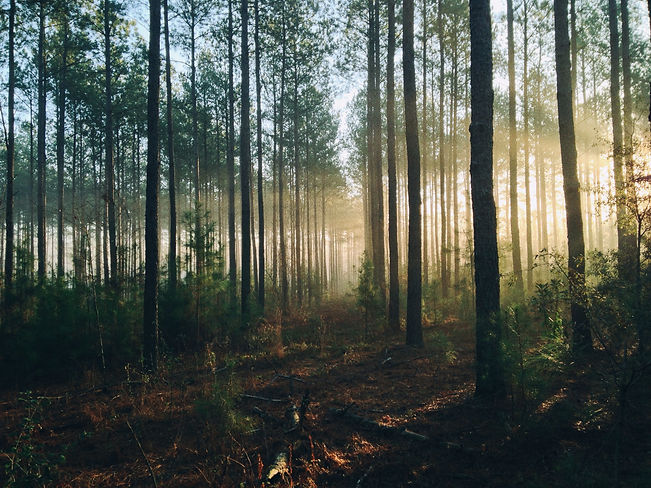
"The Forest Kindergarten model, through its interest-led programming, inquiry-based teaching style and emphasis on social and emotional development promotes kindergarten readiness in the following ways: it leads to better problem solving; higher critical thinking; encourages excitement about learning and retains the desire to learn; it teaches kids HOW to problem solve not WHAT the answers are; it expands creativity; it promotes a willingness to take risks; and it results in children who have better peer communication, emotional resilience, lower frustration levels, higher perseverance, and who work more cooperatively with their class mates."
Erin Kenny
Founder of one of the first Forest Schools in the United States
Our Philosophy
Two Pines Forest School is a boutique forest school dedicated to prioritizing quality over quantity. Our unique approach to forest school practice emphasizes creativity, strong relationships, and social-emotional learning.
Here are the core pillars that distinguish us from the rest:
1- Creativity, Innovation, Imagination:
Studies show that creativity is on the decline in the United States. In a 2010 report and 2017 follow-up study, data indicate that “children have become less emotionally expressive, less energetic, less talkative and verbally expressive, less humorous, less imaginative, less unconventional, less lively and passionate, less perceptive, less apt to connect seemingly irrelevant things, less synthesizing, and less likely to see things from a different angle.”
Educational scholar and creativity researcher Kyung Hee Kim has found that K-12 children's scores on the Torrance test, the most reliable measure of creativity, have dropped by more than a full standard deviation within a generation. This means that 85 percent of today’s children are less creative than those in the 1980s. The most significant decline was observed in the youngest children, with noticeable decreases in their emotional and linguistic expression, imagination, humor, unconventional thinking, and ability to connect seemingly unrelated concepts.
In her 2016 book, The Creativity Challenge: How We Can Recapture American Innovation, Kyung Hee Kim discusses what she calls a "creativity crisis" in American culture. She attributes this decline to familiar culprits: childhoods lacking in free play and unstructured time, the rise of standardized testing, eradication of arts and music programs from curriculums, and increasingly narrow academic goals. Given that young children learn about the world through deep human attachments and physical exploration, it’s hard to imagine that heavy exposure to smartphones in the toddler and preschool years hasn’t also played a significant role.
At Two Pines Forest School we are intentional about cultivation of children’s innate creativity and imagination. We refrain from “providing the answers” and give them the opportunity to express their own ideas or come up with their own way of doing things. We provide them with a lot of unstructured time and opportunity for free play and hands-on experiences and encourage them to ask questions, make hypotheses and experiment.
As professional artists, the founders of Two Pines also put an emphasis on art making as a serious, ongoing and long term “process” of creation, experimentation, exploration, decision making, problem solving, adding, subtracting, or modifying elements, open-ended material, recyclables and loose parts. Our Maker’s Space is a daily space designated to engage in this artistic process.

Children designing and prototyping a playground.
2- Play
“The mind grows by self revelation. In play the child ascertains what he can do, discovers his possibilities of will and thought by exerting his power spontaneously. In work he follows a task prescribed for him by another, and doesn't reveal his own proclivities and inclinations; but another's. In play, he reveals his own original power.”
Friedrich Froebel, German pedagogue and founder of Kindergarten
Play is defined as an activity that has 3 main characteristics;
1- Being freely chosen,
2- Being personally directed
3- Being intrinsically motivated
Given this description it’s not an exaggeration to say that play is, as Friedrich Froebel puts it, “the highest expression of human development in childhood” as well as adulthood and that humanity's greatest creations, inventions and discoveries are mostly achieved through play, which is a personal and unique passion and can be a very serious and focused but joyful and highly driven endeavor.
Play is how children self actualize, find their true passions and reach the peak of their potential. Play also goes hand in hand with creativity as it encourages flexible, imaginative, out-of-the-box thinking. There is no recorded society — even in times of social upheaval and collective trauma — where young children didn’t play. Play is a cultural universal that has served human development well for many thousands of years, helping children to make meaning, test hypotheses, think symbolically, build relationships, express ideas, and work through difficult feelings and experiences.
At Two Pines Forest School we respect children’s right to free play and focus our efforts on creating a space where children “drop" into the flow of play and then we try not to interrupt that as much as possible. Numerous studies show that play is essential for children's development, fostering creativity and imagination while building physical, cognitive, and emotional strength. It plays a crucial role in healthy brain development and allows children to engage with and explore the world around them from a very early age. Through play, children create and explore environments they can master, which helps them confront and overcome fears and practice adult roles, sometimes with other children or adult caregivers. As they navigate these experiences, play helps them build new skills, leading to greater confidence and resilience for future challenges.
When play is self-directed, children learn vital social skills, such as working in groups, sharing, negotiating, resolving conflicts, and advocating for themselves. Child-driven play also allows them to practice decision-making, discover their interests, and fully immerse themselves in their passions. Although adults often participate in play, when play is directed by adults, children may lose out on some of its benefits, particularly in developing creativity, leadership, and group dynamics. Unlike passive forms of entertainment, play encourages active, healthy bodies and can be a powerful tool in addressing issues like childhood obesity. Above all, play is the greatest source of joy and an integral part of a fulfilling childhood.

Children busy in their imaginative play in a spot they called "fun club".

Facilitators often join in children's play, following their metaphors and rules, or sometimes they might initiate collaborative games to foster collective connection and joy, as well as serving other pedagogical purposes, such as enhancing less-used senses, as in the example above.
3- Community, Connection, Relationships
A Harvard study on human happiness that is one of the world’s longest studies of adult life proves that good relationships and community are keys to our happiness and overall health. Early years of development are crucial for emotions such as love, trust, attachment, kindness and empathy to grow roots in a human child's psyche through long term and deep experiences and exposures. That is why it’s important to avoid transitions and changes of environment/community for young children as much as possible. (Such transitions are even detrimental to adults and their sense of belonging and trust and could possibly result in their isolation)
Today, it is more crucial than ever to focus on these fundamental human needs when raising our children, adults of the future. We live in an era of loneliness epidemic in the United States, exacerbated by the COVID-19 pandemic, and the widespread use of smartphones, virtual reality, and social media. These factors have led to unprecedented rates of loneliness, anxiety, and isolation among young people who more than anything else need real-world connections, friendships, a sense of belonging to community as well as connection to nature, which develops our sense of purpose, meaning and being part of something greater than ourselves.
At Two Pines Forest School, we prioritize community building and caring relationships facilitated through cultivation of communication skills in children. This emphasis is rooted in both personal and cultural values that the founders, two Iranian women, grew up with, and feel so passionate to share with their community here in their chosen home.
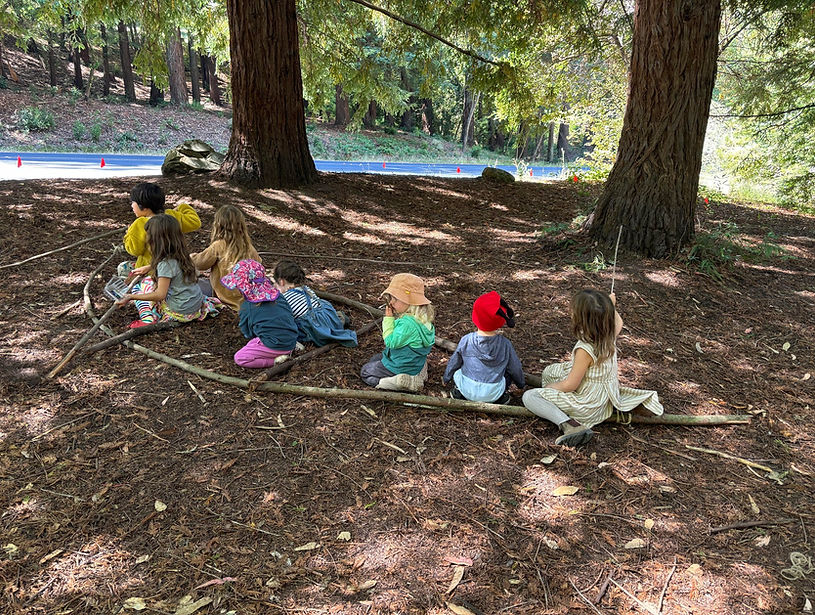
Children immersed in their play in the canoe that they all made together. They demonstrated impressive care and kindness, negotiating their roles as the crew of the canoe before sailing it to the ocean together!
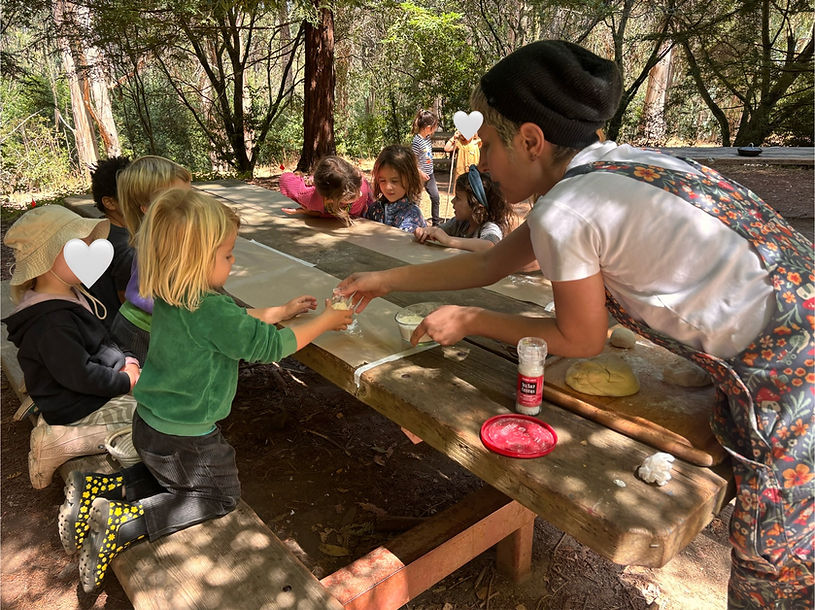
Preparing and sharing food together is a timeless ritual that fosters deep connection and a sense of community.
4- Social Emotional Development
At Two Pines Forest School, we place a strong emphasis on social-emotional development. By closely observing children's behavior and interactions, we integrate practices that foster interpersonal and emotional skills. We use a variety of methods, including books, storytelling, puppet shows, group discussions, cooperative games, reflective activities, and, most importantly, ample time for free and imaginative play, where much of the learning naturally occurs. These practices help children develop essential life skills such as empathy, self-regulation, conflict resolution, frustration tolerance, patience, cooperation, active listening, sharing, adaptability, emotional expression, perspective-taking, problem-solving, negotiation, and more. We believe these social-emotional skills should be the primary focus in early childhood, taking precedence over academic skills like math, reading, or writing, which can be learned later.
Prioritizing social-emotional development is also key to fostering caring, cooperative, and healthy friendships and relationships—an integral part of our forest school philosophy. In these formative early years, children need loving, nurturing, and safe environments and communities to thrive. At our school, we prioritize building strong connections between children and their teachers, peers, and nature. This helps them cultivate emotional security, a deep sense of belonging, trust, and healthy attachments. These elements form the foundation for resilience, self-esteem, and overall mental health and well-being.

Children building and problem solving together.
5- Kindness
At Two Pines Forest School, we place a strong emphasis on kindness by modeling and practicing it daily, understanding its importance in shaping well-rounded individuals. Richard Weissbourd, a child and family psychologist at Harvard, highlighted in his research published in his book The Parents We Mean to Be, that many modern parents prioritize their children’s happiness over kindness, not realizing that being kind and considerate means having higher social emotional intelligence and the ability to form much better relationships that in return contributes to deeper happiness and satisfaction.
In a survey, two-thirds of high school students ranked happiness above being good or caring for others, reflecting their belief that their parents shared this priority. This shift from past generations, where kindness was more highly valued, underscores a concerning trend. While it’s important to teach children to stand up for themselves and be independent thinkers—especially in situations involving ethical issues like bullying or abuse—it is equally crucial to instill in them the values of conscientiousness and kindness in their everyday lives. If we disregard good manners or kindness as inauthentic or potentially harmful, or emphasize that being true to their own feelings is the only thing that matters, we may unintentionally convey the idea that empathy and consideration for others are optional, rather than essential aspects of human decency. This can adversely affect their mental health and lead to a generation of adults who are withdrawn, disconnected, isolated and incapable of building strong and lasting relationships which require compromise, care and empathy above all.
Research supports that children are more motivated to be kind when we set high expectations, provide explanations, model the behavior, and give them ample opportunities to practice. By explaining the benefits of kindness and making our expectations clear, children are better prepared to choose to be kind in various situations. We also understand that what may appear as rudeness in children is often social awkwardness, which can be mitigated with guidance and preparation.
Ultimately, teaching kindness not only helps children develop good manners but also contributes to their lasting happiness. Studies show that compassionate behavior leads to better relationships and a deeper sense of joy. At Two Pines Forest School, we are committed to fostering both happiness and kindness in our learners, believing that they go hand in hand in creating a fulfilling and meaningful life.

Children gathering around one journal to create drawing gifts for each other during nature journaling.
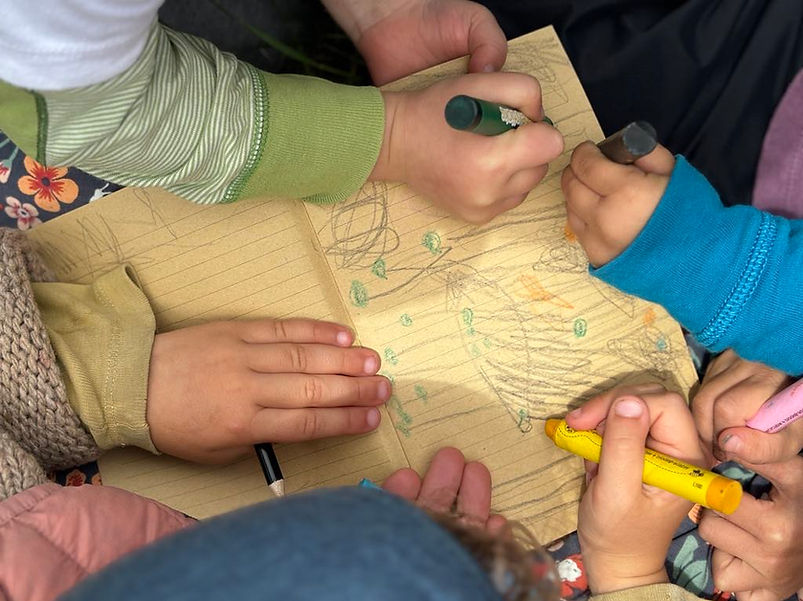
6- Nature Connection
Numerous research especially in recent years and as children's lives have largely moved indoors, with the loss of free-ranging exploration of the nearby natural world, show that nature connection is crucial for children’s mental, emotional, social, physical and spiritual development, that is their holistic development. It is also important to note that nature connection goes beyond simply being in nature or identification of plants/animals (nature contact); nature connection involves a deep, meaningful relationship with the natural world which takes time and an emotionally and sensory rich approach. We want to help children to "feel" nature, build joyful lasting memories through free imaginative play and sensory experiences, and grow empathy and an appreciation for the role of every single living thing in the complex and interconnected web of life. So while nature contact might include activities like walking in a park or observing wildlife in a zoo or reading about them in books and identifying names, nature connection would mean building relationships with a natural place and all its residents which fosters a profound sense of belonging and engagement with the environment. This deeper connection enhances overall well-being and fosters a lifelong reservoir of joy and inner peace in a child's soul as well as a commitment to caring for the natural world. Additionally, nature connection helps children feel part of a larger whole, fostering a sense of purpose, meaning and belonging. This holistic experience encourages mindfulness, presence, and introspection, allowing children to develop a deeper understanding of themselves and their place in the world.
In the era of Environmental Degradation, fostering a strong connection to nature in children and raising them as environmental stewards is more crucial than ever. As global warming accelerates and natural ecosystems face unprecedented threats, it is imperative that the next generation develops a deep appreciation for and commitment to the environment. Engaging with nature from a young age instills a sense of responsibility and urgency to protect and preserve our planet. By nurturing environmental stewardship, we empower children to become informed, proactive citizens who advocate for sustainable practices and innovative solutions to combat environmental challenges. This connection not only enhances their well-being and development but also ensures that they carry forward the values and actions needed to heal and sustain our world.
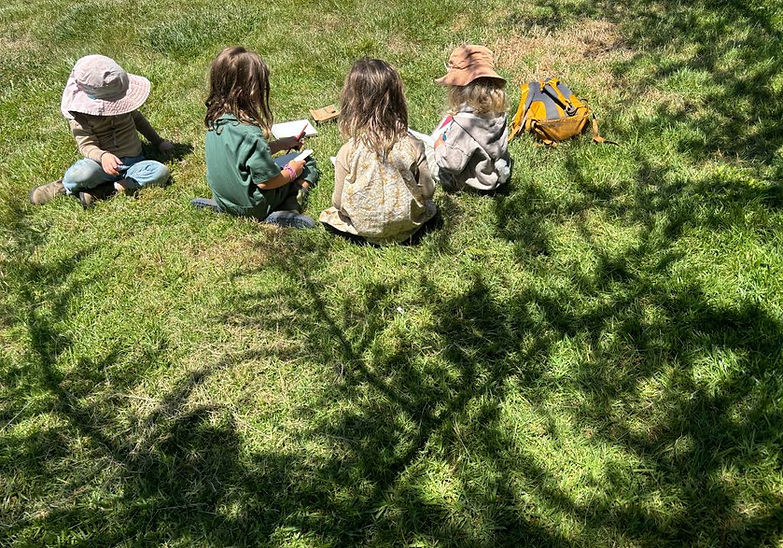
.png)